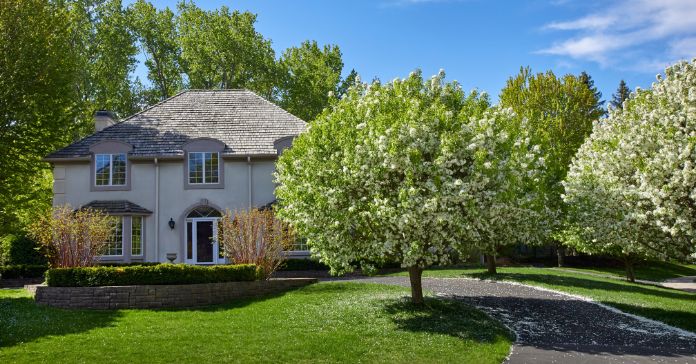
Trees add beauty, shade, and value to your property but require proper care and attention to thrive. Understanding the essentials of tree maintenance can help you preserve the health and appearance of these natural assets. Here are some effective strategies to ensure you’re caring for the trees on your property.
Regular Watering
Trees, especially young and newly planted ones, need adequate water to establish their root systems and support growth. Watering amount and frequency depend on the species, soil type, and climate conditions, but a general rule is to provide deep, infrequent watering rather than frequent shallow watering. This approach encourages deeper root growth, which helps trees become more drought resistant. Even mature trees benefit from supplemental watering during prolonged dry spells to prevent stress.
Mulching
Mulching provides numerous benefits for trees. It helps retain soil moisture, regulate soil temperature, and suppress weed growth, which can compete with trees for nutrients. Apply a two- to four-inch layer of organic mulch, such as wood chips or bark, around the base of the tree, but avoid piling mulch against the trunk, as this can lead to moisture retention and rot. Refresh the mulch layer annually to continue supporting your tree’s health.
Monitoring and Protection
Regularly inspect your trees for signs of pests, diseases, or environmental stress. Early detection is key to addressing problems before they become severe. Protect trees from mechanical damage caused by lawn mowers and string trimmers by maintaining a clear area around the base. Additionally, consider the importance of professional tree trimming for older or larger trees to ensure they remain safe and stable.
Seasonal Tree Care
Understanding and implementing seasonal tree care can greatly enhance the health and longevity of your trees. Each season presents unique challenges and opportunities for tree maintenance. For example, spring is ideal for fertilization and assessing winter damage, while fall is the time to prepare trees for the colder months ahead. Staying informed about the specific needs of your trees throughout the year ensures they receive the care they require to flourish.
Now that you know how best to care for the trees on your property, you’re equipped to take proactive steps toward nurturing their growth and preserving their beauty. By committing to these practices, you can enjoy the myriad benefits trees bring to your landscape and environment.







